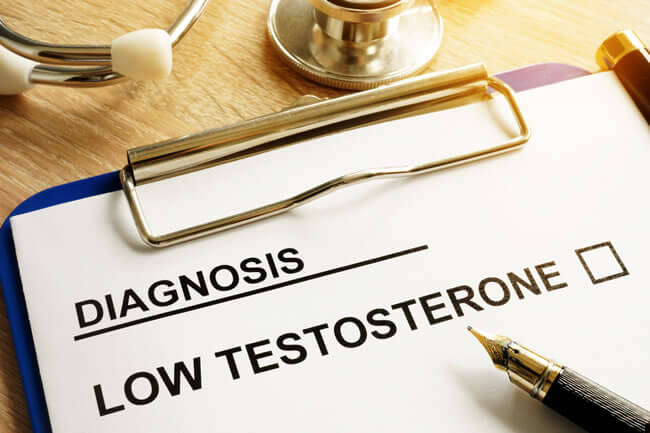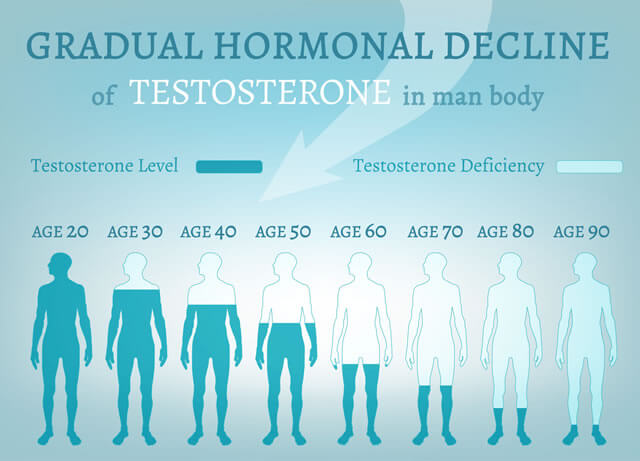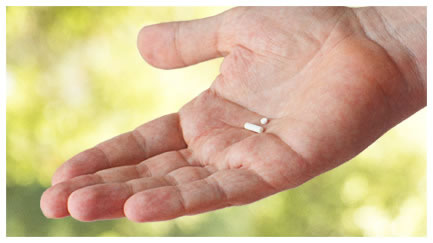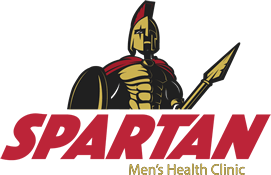Low Testosterone
We believe that every man with symptoms of low testosterone requires a personalized approach and treatment as indicated. Meticulous follow up is necessary for optimal results and prevention of side effects and other related diseases, such as prostate cancer. We offer evidence-based and effective treatment of men with symptoms of low testosterone, with focus on the cause, restoration of natural production, prevention, holistic education, and effective supplementation. We believe that every man with symptoms of low testosterone requires a personalized approach and treatment as indicated.
What is low testosterone?
Low testosterone (male hypogonadism) is a condition in which the testes (testicles, the male reproductive glands) do not produce enough testosterone (a male sex hormone). Low testosterone affects almost 40% of men aged 45 and older. There is difficulty defining normal testosterone levels, because levels vary throughout the day and are affected by your body mass index, alcohol, nutrition, certain medications, age and illness.
As a man ages, testosterone gradually drops. This natural decline starts after age 30 and continues (about 1% per year) throughout his life.


Low testosterone numbers do not necessarily indicate need for therapy if you don’t have symptoms of low T. Many cases show normal numbers with symptoms and therapy can give improvement.
What are the benefits of testosterone replacement therapy?
Potential benefits of testosterone replacement therapy may include:
- Loss of fat
- Increased bone density and protection against osteoporosis
- Improved mood and sense of well-being
- Improved sexual function
- Improved mental sharpness
- Greater muscle strength and physical performance
How is low testosterone diagnosed?
Low testosterone is diagnosed by measuring the amount of testosterone in the blood with a blood test. The levels may vary and repeat testing is often performed. The highest levels of testosterone are generally in the morning, near 8 a.m.
How is low testosterone treated?
Using testosterone replacement therapy, treatment is done in several different ways:
- Intramuscular injections (into a muscle), usually every 10 to 14 days
- Testosterone patches, which are used every day and are applied to different parts of the body
- Testosterone gels that are applied every day to the skin of the upper back and arms
- Pellets that are implanted under the skin every 3-4 months
Are there side effects?
The side effects of testosterone replacement therapy include: (symptoms are uncommon)
- Acne or oily skin
- Swelling in the ankles caused by mild fluid retention
- Stimulation of the prostate (can cause difficulty urinating)
- Breast enlargement/tenderness
- Worsening of sleep apnea
- Smaller testicles
- Skin irritation (in patients receiving topical testosterone replacement)
Good nutrition, exercise, weight management and avoiding excessive alcohol or drug use helps keep testosterone levels normal. An experienced physician must perform testosterone replacement therapy and monitoring with meticulous follow up to find your sweet spot testosterone level with minimal side effects.
Meticulous follow up is necessary for optimal results and prevention of side effects and other related diseases, such as prostate cancer.
What is Testosterone pellet therapy?
 Testosterone hormone replacement therapy is the most reliable way to overcome hormone deficiencies and imbalances.
Testosterone hormone replacement therapy is the most reliable way to overcome hormone deficiencies and imbalances.
There are many ways to replace bio-identical hormones: creams, troches, pills, patches, injections, gels and pellets. Pellets offer benefits that the others do not. Both men and women benefit from pellet therapy.
Substances that are absorbed from your intestines are delivered to the liver for processing prior to getting into the blood flow for your whole system. This is called first pass metabolism. Testosterone and estrogen should not be taken by mouth (either troches or pills), because you want to bypass first-pass metabolism. It’s better to deliver these two straight into the body’s blood stream instead of from the intestines. Troches allow for absorption across the lining of your cheek, but there is also some dissolved in your saliva which is swallowed and goes to the intestines resulting in a mix of delivery. Estrogen and testosterone are too hard on the liver which causes inflammation and the liver enzymes to go up. Pellets deliver the hormones into the body’s blood stream.
Another benefit from pellets is lack of transference. It is possible to transfer hormone to other people through body contact if hormones are delivered transdermally (lotion, cream, gel). If you gave someone a hug, they could pick up hormone onto their skin. This could involve spouses, kids, grandkids, friends, co-workers, and pets even. With pellets, that’s never a concern.
Our clients really enjoy the nice consistent, stable hormone levels they receive from their pellets. It’s a nice even distribution from the pellet without the ups and downs of daily application from other methods. However, if the body heat or blood flow go up, like in exercise, then more hormone will come off the pellet. On the flip side, we don’t need as much hormone when we are sleeping which is also when our body temp and blood flow are lower.
The thing people really love about pellets is the convenience. We place our pellets every 3 months, so there’s no daily hassle. Some people have a hard time remembering to apply or inject their hormones. Life is so busy that it can be hard to remember one more thing. It’s a disruption of a daily schedule when you are just trying to get out the door. With pellets, you pop into our office once every 3 months and then, you’re back out onto the road. It’s a quick, easy 10 minute procedure and you’re good to go. Once people start their pellets, they won’t give them up, because they feel so much better on them!













